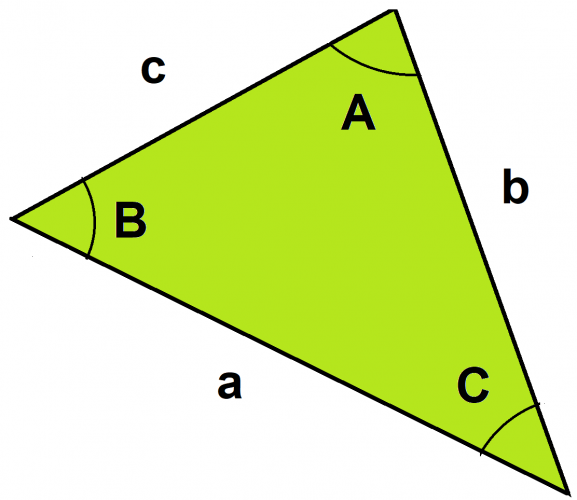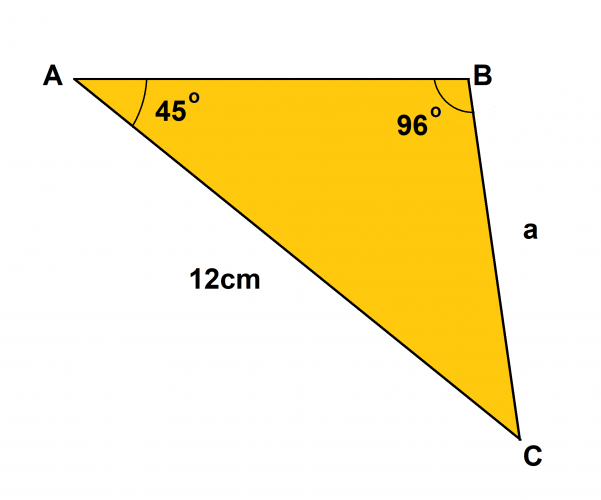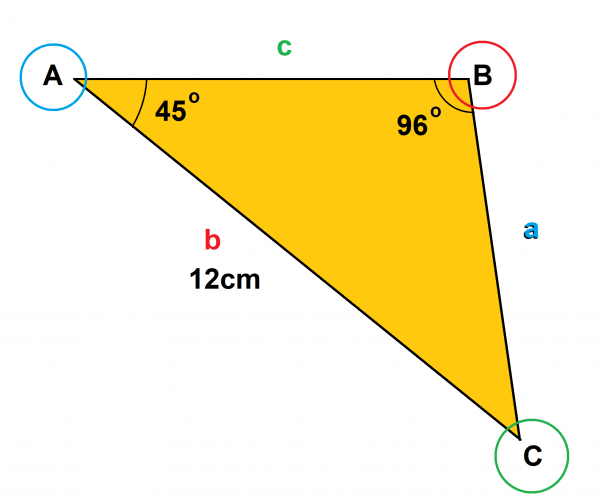In this activity, we will look at using the sine rule to find missing sides of triangles.
Why do we use the sine rule?
You have probably already used Pythagoras and "SOHCAHTOA" to calculate missing lengths, so why do we need another rule? The reason we have a different method is because Pythagoras and SOHCAHTOA only work on right-angled triangles. The sine rule works for any type of triangle. So if you find yourself needing to find the length of a triangle that doesn't contain a 90º angle, you can turn to the sine rule!
How does it work?
Let's look at the formula and what it means.
Suppose we have a triangle as shown with lengths a, b and c, and angles A, B and C:

The relationship between the lengths and angles is:

So, if we know one length and two angles, we can substitute them into the formula and rearrange to find another length.
Let's look at an example.
Example
Calculate length a.

Step 1: Label each angle of the triangle A, B, and C. You are free to pick which angles get each letter if the triangle is blank; In this case, the names of the angles have already been given.
Step 2: Label each length. Now this is where we have to be very precise, otherwise our formula will not work. The length opposite angle A must be called a, the length opposite B must be called b, and the length opposite angle C must be called c.

Step 3: Write the formula and identify the parts you need to use. Notice that angle C and length c are completely blank, so we do not need to include that term of the formula.
a / sin A = b / sin B
Step 4: Substitute the known lengths and angles into the formula:
a / sin 45 = 12 / sin 96
Step 5: Rearrange the formula and calculate the length:
a = sin 45 x (12 / sin 96)
a = 8.53 cm (2 d.p.)
Now that you have seen the formula and an example of how to use it, have a go at this activity!

